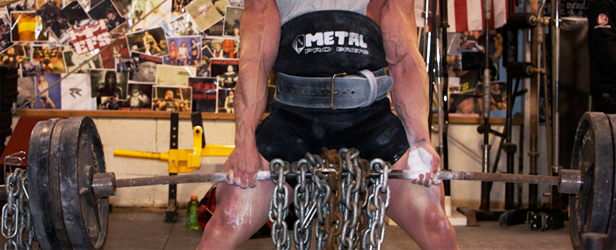
Due to a recent influx of hip flexor questions, I decided to put together a few thoughts on the issue. Hip flexor injuries are all too common, especially at the beginning of training camps. Athletes spend the entire off-season developing the posterior chain and getting big squat and deadlift numbers. While the posterior chain and its role in hip extension is very important, the hip flexors are usually forgotten.
Let’s first examine the major hip flexors. There are really three worth mentioning. The prime mover is the rectus femoris. This is a two joint muscle and acts as a hip flexor and knee extensor. The synergists in this case are the psoas and the tensor fascia latae (TFL). What is interesting is that throughout the range of motion, the synergists become the prime movers. Once the femur reaches about 90 degrees of hip flexion, the psoas takes over for the rectus femoris. This is because the rectus has reached a shortened state and is incapable of putting out a necessary amount of force.
Try this easy test. Stand up tall with your hands behind your head and your elbows wide. From that position, attempt to lift one knee past hip height while maintaining posture. There are a few compensation patterns to note. The first is if you just can’t do it period. Second, your TFL might cramp up. Think of it this way—if your psoas is weak, your TFL will attempt to carry the load, resulting in a cramp. Third, in order to raise your knee to the appropriate height, you lose posture, and finally, your hip tilts. This is the quadratus lumborum’s (QL) attempt to help in the fight.
The standing psoas strength test

Compensations

Inability to lift knee/TFL

Loss of posture

Hip tilt
This test is the basis behind Gray Cook’s hurdle step test in the functional movement screening, and all of the compensation patterns indicate a weak psoas. So what does this mean? That’s a good question.
In Shirley Sahrmann’s book, Diagnosis and Treatment of Movement Impairment Syndromes, she talks about the role of synergists in movement. Her take is that when you have a continued muscular problem in a prime mover, look for a weak synergist. For example, if you have continued hamstring strains, you may have weak glutes. If you have continued pec strains, you may have a weak subscapularis. In this case, continued hip flexor strains equal a weak psoas. So what do we do about the problem?
In my article, “A Strength Coach’s Guide to Dealing with Pain, Part 2: The Knee,” I discussed many different strategies to lengthen the hip flexors. Now let’s talk about strengthening the hip flexors. It’s interesting to note that tightness, very often, is a result of weakness. Weak, overworked hip flexors shorten and contract in order to create the illusion of movement. An involuntary muscular spasm is the muscle’s best way of creating stability. Strengthening in this case will relieve the need to spasm.
Here is an easy, four step progression to strengthening the psoas. Again, to strengthen the psoas, we need to get our knee past 90 degrees.
Lying band hip flexion


Start with you knees past 90 degrees. This will ensure that actually get there to begin with.
Lying cable hip flexion


Standing hip flexion


Side standing cable hip flexion


With all of the development of the posterior chain and hip extension strength, it’s easy to forget about hip flexion. In his book, Ultimate Back Fitness and Performance, Stuart McGill actually notes hip flexion power as being the most prevalent limiting factor in sprint speed, not hip extension.
References
1. Boyle Mike. Advanced Program Design DVD.
2. Sahrmann Shirley. Diagnosis and Treatment of Movement Impairment Syndromes.
3. McGill Stuart. Ultimate Back Fitness and Performance.








